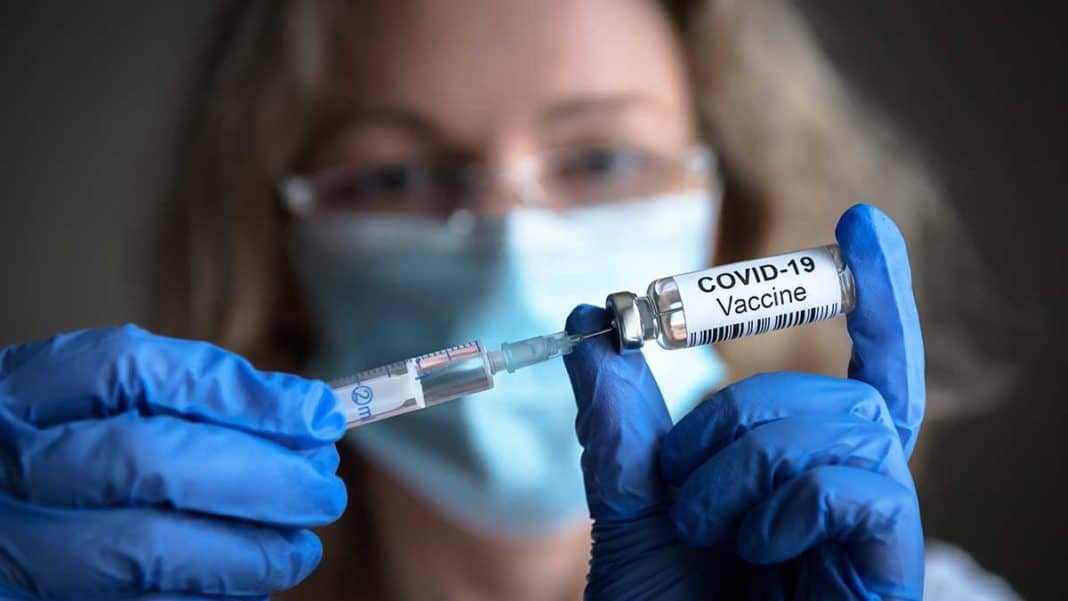QUEEN’S PARK – The provincial government is coming under fire for the slow rollout of a provincial vaccination program to combat the COVID-19 pandemic. The provincial government has claimed a lack of health professionals over the holidays as the root cause—an assertion that has elicited strong pushback.
“We have had vaccine supplies for two weeks, at least, but delays in the rollout have resulted in the furthering of the spread of COVID-19 and causing more deaths,” said Algoma-Manitoulin MPP Mike Mantha. Mr. Mantha asserted that the Ford government tried to deflect the blame onto health workers. “The RNAO (Registered Nurses Association of Ontario) said they were ‘ready and willing to help.’ There should be no more excuses. Stop with the talking points, call back the legislature, roll up your sleeves and get to work.”
As an aside, Mr. Mantha noted that he spent the holiday season lockdown snuggled in at home. “No cold beers on a warm sunny beach for me,” he laughed.
The Manitoulin medical community has not been idle, with the Manitoulin community response emergency preparedness plan group headed up by Dr. Maurianne Reade submitting a document to Public Health Sudbury and Districts (PHSD) outlining the strengths and challenges of the Island’s infrastructure and demographics to help inform the region’s rollout plans.
“Elements were submitted showing the different strengths and processes, human resources services and challenges to PHSD,” she said. The feedback on that document received on the report from Dr. Penny Sutcliffe, medical officer of health for the region was positive, noted Dr. Reade. “She was quite impressed,” shared Dr. Reade. “The information will help us be as strategic as we can—as effective as possible.”
The provincial rollout has currently listed 17 hospitals as clinics to distribute the vaccines, but only one is located in Northern Ontario, that being in Thunder Bay. The province hopes to utilize the data collected from the Thunder Bay site as a template for the rollout in Northern Ontario, but Dr. Reade was not enthusiastic about the efficacy of that approach.
“While it may provide some useful information, I don’t think it will provide a recipe for us,” she said.
While Northern Ontario may seem homogenous from a southern Ontario lens, there are numerous differences between Thunder Bay and rural areas such as Manitoulin.
The current plan for long-term care facilities will see a phased roll-out of the vaccine, with only 30 percent of the staff being inoculated at a time.
“That makes sense,” suggested Dr. Reade. She noted that with the guidelines dictating that staff not attend work if they exhibit any of the symptoms, the mild after-effects of the vaccine could fit that bill—if the entire staff were done at once, the impact could be massive. “Even if only five percent of your staff exhibit symptoms, how do you fill that gap?” she asked. “Doing only one-third of the staff will lessen any impact that might have.”
Both the Pfizer-BioNTech and Moderna vaccines are fragile and must be stored and transported in special conditions to keep them stable and effective—the Pfizer version much more so. While the Moderna vaccine can be stored at -20 degrees Celsius, the Pfizer-BioNTech vaccine requires -70 Celsius, making the Moderna vaccine easier to transport and store safely.
Thus, the Pfizer-BioNTech vaccine will be administered primarily in hospitals located in urban areas, while the Moderna vaccine will figure in long-term care homes and more rural and remote communities.
The province’s phased approach consists of a phase one, already underway, where 2,500 health care workers in select long-term care homes and hospitals were vaccinated at University Health Network in Toronto and Ottawa Hospital in a pilot.
The purpose of the readiness pilot was to help inform the government’s plan for receiving more vaccine doses during phase one, test the logistics of delivery, vaccine storage and handling, clinic management and post-vaccine surveillance and learn from people’s experience being vaccinated so the government can improve future vaccinations.
The vaccine will be available to health care workers, essential caregivers, long-term care home and retirement home residents, First Nation communities and urban Indigenous populations, including Métis and Inuit adults.
By the end of January, the government anticipates more than 20 hospitals across Ontario will be administering the vaccines.
Phase two will begin when more doses become available to Ontario. This is expected to begin later this winter. During phase two, “pending consultation,” vaccinations will be expanded to all members of the groups in phase one; additional congregate care settings (for example, shelters); and adults over 70 in expanded regions.
Ontario will enter phase three when vaccines are available for everyone who wants to be immunized.
Vaccines will not be mandatory, but people are “strongly encouraged to get vaccinated” by the province.
General (retired) Rick Hillier, former chief of defence staff for the Canadian Forces, is chair of the COVID-19 Vaccine Distribution Task Force advising Ontario’s plans for the immunization program and delivery of vaccines.





